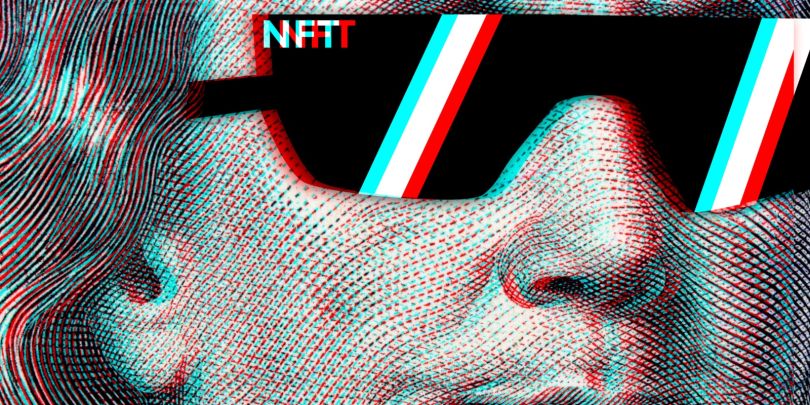46 Blockchain Companies Paving the Way for the Future

Blockchain technology is a decentralized, distributed ledger that stores the record of ownership of digital assets. Any data stored on blockchain is unable to be modified, making the technology a legitimate disruptor for industries like payments, cybersecurity and healthcare.

Blockchain is an immutable digital ledger that enables secure transactions across a peer-to-peer network. It records, stores and verifies data using decentralized techniques to eliminate the need for third parties, like banks or governments. Every transaction is recorded, then stored in a block on the blockchain. Each block is encrypted for protection and chained to the preceding block — hence, “blockchain” — establishing a code-based chronological order. This means that, without consensus of a network, data stored on a blockchain cannot be deleted or modified. These new-age databases act as a single source of truth and, among an interconnected network of computers, facilitate trustless and transparent data exchange.
Apart from moving cryptocurrencies from one wallet to the next, blockchain technology is an emerging technology with wide-ranging application potential, from preventing fraudulent banking and supply-chain bottlenecks to safeguarding medical records.
Blockchain is a revolutionary technology because it helps reduce security risks, stamp out fraud and bring transparency in a scalable way.
Popularized by its association with cryptocurrency and NFTs, blockchain technology has since evolved to become a management solution for all types of global industries. Today you can find blockchain technology providing transparency for the food supply chain, securing healthcare data, innovating gaming and changing how we handle data and ownership on a large scale.
Blockchains are distributed data-management systems that record every single exchange between their users. These immutable digital documents use several techniques to create a trustless, intermediary-free system.
Let’s start with the blocks. Each block contains stored data, as well as its own unique alphanumeric code, called a hash. These cryptographically generated codes can be thought of as a digital fingerprint. They play a role in linking blocks together, as new blocks are generated from the previous block’s hash code, thus creating a chronological sequence, as well as tamper proofing. Any manipulation to these codes outputs an entirely different string of gibberish, making it easy for participants to spot and reject misfit blocks.
Another key feature to the inner workings of blockchain is decentralization. In lieu of a centralized entity, blockchains distribute control across a peer-to-peer network made up of interconnected computers, or nodes. These nodes are in constant communication with one another, keeping the digital ledger up-to-date. So when a transaction is taking place among two peers, all nodes take part in validating the transaction using consensus mechanisms. These built-in protocols keep all in-network nodes in agreement on a single data set. No blocks can be added to the blockchain until it is verified and has reached consensus. Luckily, this step has been sped up with the advent of smart contracts, which are self-executing programs coded into a blockchain that automate the verification process.
Once a transaction is recorded, it’s considered permanent. Blockchains are one-way operations in that there are no reversible actions. This immutability is part of creating transparency across the network and a trustworthy record of all activities on the blockchain.
One of the most important concepts in blockchain technology is decentralization. No one computer or organization can own the chain. Instead, it is a distributed ledger via the nodes connected to the chain. Blockchain nodes can be any kind of electronic device that maintains copies of the chain and keeps the network functioning.
Every node has its own copy of the blockchain and the network must algorithmically approve any newly mined block for the chain to be updated, trusted and verified. Since blockchains are transparent, every action in the ledger can be easily checked and viewed, creating inherent blockchain security. Each participant is given a unique alphanumeric identification number that shows their transactions.
Combining public information with a system of checks-and-balances helps the blockchain maintain integrity and creates trust among users. Essentially, blockchains can be thought of as the scalability of trust via technology.

Having a cryptographically secure permanent record comes with perks:
Cryptography and hashing algorithms ensure that only authorized users are able to unlock information meant for them, and that the data stored on the blockchain cannot be manipulated in any form. Consensus mechanisms, such as proof of work or proof of stake, further enhance security by requiring network participants to agree on the validity of transactions before they are added to the blockchain. Additionally, blockchains operate on a distributed system, where data is stored across multiple nodes rather than one central location — reducing the risk of a single point of failure.
By providing a fully transparent, single-source-of-truth ledger, where transactions are recorded in a chronological and immutable manner, the potential for error or discrepancy drops when compared to centralized databases or manual record-keeping processes. Transactions are objectively authorized by a consensus algorithm and, unless a blockchain is made private, all transactions can be independently verified by users.
Aside from saving paper, blockchain enables reliable cross-team communication, reduces bottlenecks and errors while streamlining overall operations. By eliminating intermediaries and automating verification processes — done via smart contracts — blockchain enjoys reduced transaction costs, timely processing times and optimized data integrity.
Although this emerging technology may be tamper proof, it isn’t faultless. Below are some of the biggest obstacles blockchain faces today.
As blockchain networks grow in popularity and usage, they face bottlenecks in processing transactions quickly and cost-effectively. This limitation hampers the widespread adoption of blockchain for mainstream applications, as networks struggle to handle high throughput volumes, leading to congestion and increased transaction fees.
The computational power required for certain functions — like Bitcoin’s proof-of-work consensus mechanism — consumes vast amounts of electricity, raising concerns around environmental impact and high operating costs. Addressing this challenge requires exploring alternative consensus mechanisms, such as proof of stake, which consume significantly less energy while maintaining network security and decentralization.
As it is now, every node of a blockchain network stores a copy of the entire data chain and processes every transaction. This requires a certain level of computational power, resulting in slow, congested networks and lagged processing times especially during high-traffic periods. Scalability issues arise due to limitations in block size, block processing times and resource-intensive consensus mechanisms. This is why novel approaches — such as layer 2 scaling solutions, sharding and alternative consensus algorithms — are being developed.
Governments and regulators are still working to make sense of blockchain — more specifically, how certain laws should be updated to properly address decentralization. While some governments are actively spearheading its adoption and others elect to wait-and-see, lingering regulatory and legal concerns hinder blockchain’s market appeal, stalling its technical development.
Blockchain originally started out as a way to safeguard digital records with tamper-proof technology. Since its induction into the mainstream alongside Bitcoin’s debut, the data management protocol has expanded beyond DeFi into its various industries across a wide-range of applications.
For banks, blockchain makes it easier to trade currencies, secure loans and process payments. This tech acts as a single-layer, source-of-truth that’s designed to track every transaction ever made by its users. This immutability protects against fraud in banking, leading to faster settlement times, and provides a built-in monitor for money laundering. Banks also benefit from faster cross-border transactions at reduced costs and high-security data encryption.
Smart contracts are self-executing protocols that automate transaction verification. They’re coded into the blockchain and set by predetermined terms. In addition to reducing human error, their function is to facilitate decentralization and create a trustless environment by replacing third-party intermediaries.
Deemed a “new weapon in cybersecurity,” blockchain’s decentralized, tamper-proof ledger comes with built-in defenses against theft, fraud and unauthorized users via cryptographic coding and consensus mechanisms. Because of this, blockchain has been adopted into cybersecurity arsenals to maintain cryptocurrency, secure bank assets, protect patient health records, fortify IoT devices and even safeguard military and defense data.
Healthcare services primarily use blockchain to securely encrypt patient data stored in their medical records. Particular functions, like smart contracts, automate processes such as insurance claims processing and medication adherence monitoring, which enhances efficiency and reduces administrative overhead. Blockchain also facilitates secure sharing of medical data between healthcare providers, patients and researchers, and is even being recruited by genome-sequencing startups to help crack the genetic code.
In logistics, blockchain acts as a track-and-trace tool that follows the movement of goods through the supply chain. The transparent system offers users real-time visibility of their shipments, from manufacturing to delivery. These insights help compile data, determine faster routes, remove unnecessary middlemen and even defend against cyberattack interference.
Blockchain makes the creation, ownership and trading of NFTs, or non-fungible tokens, possible. The reason why copying these digital assets is not as simple as a quick screen capture is because each NFT is encrypted with blockchain technology, which keeps a live running record of ownership over the piece. Smart contracts govern transactions, assigning and reassigning ownership and delivering royalties to artists as pieces move from wallet to wallet.
As blockchain technology evolves, new variations have surfaced. This section provides a brief introduction to four different models that have developed by demand.
Public blockchains are permissionless networks considered to be “fully decentralized.” No one organization or individual controls the distributed ledger, and its users can remain anonymous. As long as a user can provide proof of work, they can participate in the network.
Private blockchains are permissioned networks. In the interest of garnering greater control or privacy over a network, private blockchains have a single operator that’s in charge of who can access the network and whether participants can view, verify or create data on the blockchain.
Adding restricted access to an encrypted record-keeping ledger appeals to certain organizations that work with sensitive information, like large enterprises or government agencies.
Consortium blockchains, also known as federated blockchains, are permissioned networks that are operated by a select group. Multiple users have the power to set the rules, edit or cancel transactions. With shared authority, the blockchain may enjoy a higher rate of efficiency and privacy.
Hybrid blockchains combine elements of both public and private networks. They feature selective transparency, which allows blockchain admins to restrict specific parts of the blockchain to certain participant pools while maintaining public visibility over the rest of the thread. This way, organizations are entitled to a certain level of privacy when immutably sharing data independent of a third party.

Blockchain’s origin is widely credited to cryptography David Chaum, who first proposed a blockchain-like protocol among a decentralized node network in a 1982 dissertation. Its first traces, however, go all the way back to the 1970s, when computer scientist Ralph Merkle patented Hash trees, also known as Merkle trees, that makes cryptographic linking between blocks of stored data possible.
These theories would come together in 1991, with the launch of the first-ever blockchain product. In an effort to create tamper-proof records in a digital era, scientist Stuart Haber and cryptographer Scott Stornetta developed a computational solution that would time-stamp documents using hash function in a chronological chain of digital certificates. Thanks to the help of mathematician David Bayer, Merkle trees were incorporated into the design the following year, so that data could be consolidated into one block — similar to what we know blockchain’s functionality to be like today.
Then, in 2009, Bitcoin — the world’s first cryptocurrency — debuted. Launched under the pseudonym Satoshi Nakamoto, the peer-to-peer electronic cash system not only established a digital alternative to fiat currency, it also introduced the concept of a public, decentralized blockchain that drops third party intervention. This project was largely responsible for introducing blockchain into our everyday vernacular, and wasn’t rivaled until 2015, with the launch of the Ethereum platform. Its creator, Vitalik Buterin, advances blockchain tech through smart contracts — self-executing programs that automate transaction verification — and decentralized applications, or DApps, that enable developers to partake in Web3 by building their own applications.
And while blockchain is near-synonymous with Web3 and cryptocurrency, the distributed ledger technology has found its way into a number of industries — from easing logistics bottlenecks to providing transparent patient care — in the two decades since its initial real-world application.
(2008) Satoshi Nakamoto, a pseudonym for a person or group, publishes “Bitcoin: A Peer to Peer Electronic Cash System.”
(2009) The first successful Bitcoin (BTC) transaction occurs between computer scientist Hal Finney and the mysterious Satoshi Nakamoto.
(2010) Florida-based programmer Laszlo Hanycez completes the first ever purchase using Bitcoin — two Papa John’s pizzas.
(2011) 1 BTC = 1 USD, giving the cryptocurrency parity with the US dollar.
(2011) Electronic Frontier Foundation, Wikileaks and other organizations start accepting Bitcoin as donations.
2013) BTC market cap surpasses $1 billion, and Bitcoin reaches $100/BTC.
(2013) Buterin publishes the “Ethereum Project” paper, suggesting that blockchain has other possibilities besides Bitcoin (like smart contracts).
(2014) The first-known NFT is minted.
2015) Number of merchants accepting BTC exceeds 100,000.
(2015) NASDAQ and San-Francisco blockchain company Chain team up to test the technology for trading shares in private companies.
(2016) Tech giant IBM announces a blockchain strategy for cloud-based business solutions.
(2017) Bitcoin reaches $1,000/BTC.
(2017) Cryptocurrency market cap reaches $150 billion.
(2018) IBM develops a blockchain-based banking platform with large banks like Citi and Barclays signing on.
(2019) China’s President Ji Xinping publicly embraces blockchain as China’s central bank announces it is working on its own cryptocurrency.
(2019) The New York Stock Exchange (NYSE) announces the creation of Bakkt, a digital wallet company that includes crypto trading.
(2020) BTC almost reaches $30,000 by the end of 2020.
(2020) PayPal announces it will allow users to buy, sell and hold cryptocurrencies.
(2020) The Bahamas becomes the world’s first country to launch its central bank digital currency.
(2021) Bitcoin surpasses $1 trillion in market value.
(2021) Popularity for the implementation of Web3 rises.
(2022) Cryptocurrency loses $2 trillion in market value, due to economic inflation and rising interest rates.
(2022) The U.K. government proposes safeguards for stablecoin holders.
